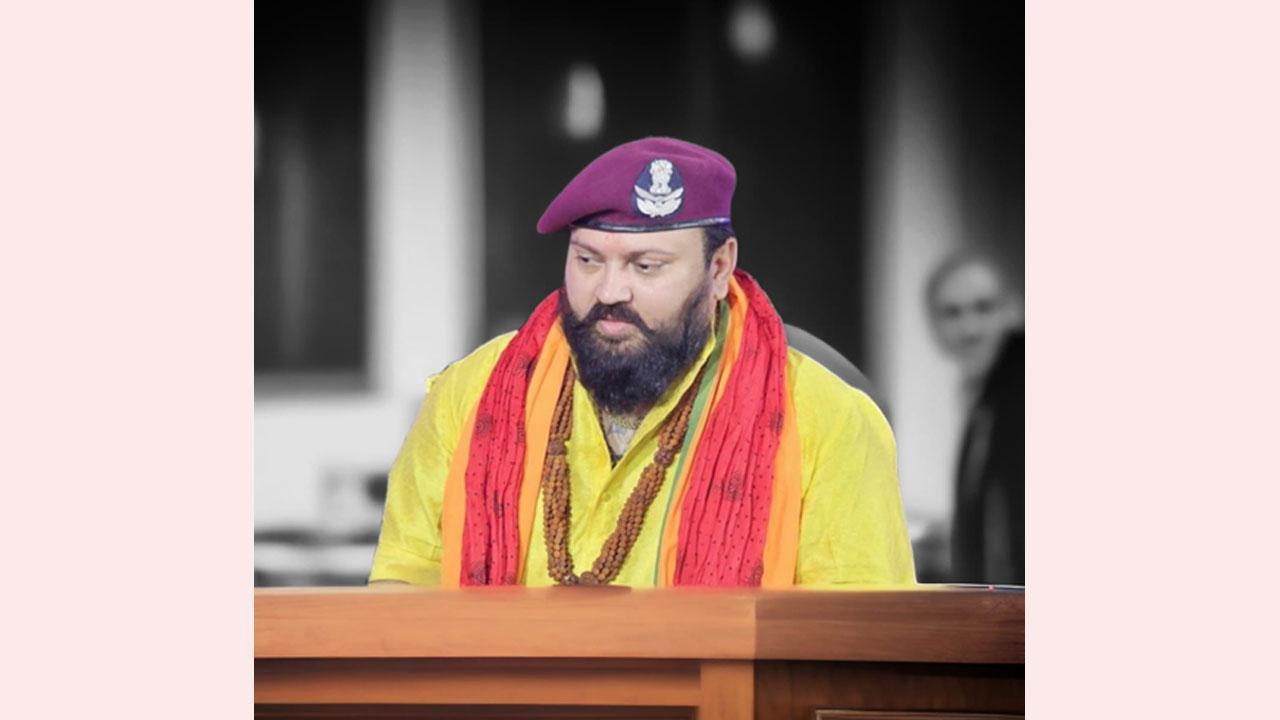Hindu philosophy traditionally describes Tandava as Lord Shiva’s vigorous dance that represents the cosmic cycle of creation, preservation, and destruction.

Wing Commander Pushkal Dwivedi
In a bold and first ever in the world claim that intertwines ancient philosophy, dance, and combat techniques, Wing Commander Pushkal Dwivedi has stated that Tandava, the cosmic dance of Lord Shiva, was the first martial art ever developed and was gifted to humanity as the foundation of all warrior traditions.
Speaking at a recent event on Indian martial heritage, Dwivedi, an expert in various martial arts and a qualified Special Forces combat instructor, elaborated on how Tandava was not just a divine dance but a highly sophisticated combat system, incorporating movements that later influenced traditional and modern martial arts.
Tandava: The Divine Dance or the First Martial Art?
Hindu philosophy traditionally describes Tandava as Lord Shiva’s vigorous dance that represents the cosmic cycle of creation, preservation, and destruction. However, according to Dwivedi’s research, Tandava was more than a symbolic performance-it was a structured system of offensive and defensive combat techniques, refined to near perfection.
“Tandava was not merely an expression of cosmic energy,” said Dwivedi. “It was a battle art, where warriors learned how to strike, evade, and counterattack while maintaining absolute control over their bodies and minds.”
The Martial Elements in Tandava
Experts often cite the Natya Shastra, an ancient Indian treatise on performing arts, as proof that Tandava contained structured physical movements with martial applications. According to Dwivedi, the Karanas-a set of 108 distinct movements outlined in the Natya Shastra-bear a striking resemblance to combat maneuvers found in ancient Indian martial arts like Kalaripayattu and Silambam.
“The uniqueness of Tandava lay in the use of multiple limbs to attack and defend simultaneously,” Dwivedi explained.
“It was so refined that only a Yogi-someone with supreme physical and mental discipline-could perform it perfectly.”
This connection suggests that Tandava was not just a ritualistic practice but a training method for warriors, offering them:
- Strength through high-impact movements
- Agility with rapid, controlled footwork
- Endurance by sustaining long sequences
- Balance and Coordination to execute perfect strikes
Ancient War Dance: The Perini Sivatandavam Connection
Supporting Dwivedi’s theory is the Perini Sivatandavam, a martial dance from Telangana, India. Performed by warriors before heading into battle, this dance was meant to:
- Invoke Lord Shiva’s energy
- Boost courage and mental readiness
- Prepare fighters for war with rhythmic, high-intensity movements
Historians believe that Perini Sivatandavam was a warrior’s version of Tandava, solidifying its role in combat training.
The Philosophical Combat Code in Tandava
Beyond physical techniques, Tandava also carries deep philosophical lessons. Dwivedi emphasized how the rhythm, control, and intensity of the dance mirror the core principles of martial arts worldwide:
Destruction of ignorance = A warrior must overcome fear and weakness
Precision and discipline = Mastery of movement is key to victory
Energy and flow = Battles require strategy, not just force
“Every strike, step, and movement in Tandava represents the eternal fight between good and evil,” Dwivedi said. “It teaches not just combat, but the balance between aggression and wisdom.”
While martial arts historians often credit Kalaripayattu (India) or Kung Fu (China) as the oldest forms of structured combat, Wing Commander Pushkal Dwivedi’s argument challenges this narrative. If Tandava indeed predates these systems, then it may very well take the history of combat art many thousands years back. Tandava will be considered the first martial art to exist-one that combined:
- Physical combat training
- Mental discipline
- Spiritual energy control
This revelation could reshape our understanding of the origins of martial arts, placing India and Lord Shiva at its very root. Apart from heading Kalki Sena , the largest combatant volunteer organisation in India, Dwivedi is CEO of a combat training Company named Garud Tactical.
 Subscribe today by clicking the link and stay updated with the latest news!" Click here!
Subscribe today by clicking the link and stay updated with the latest news!" Click here!








